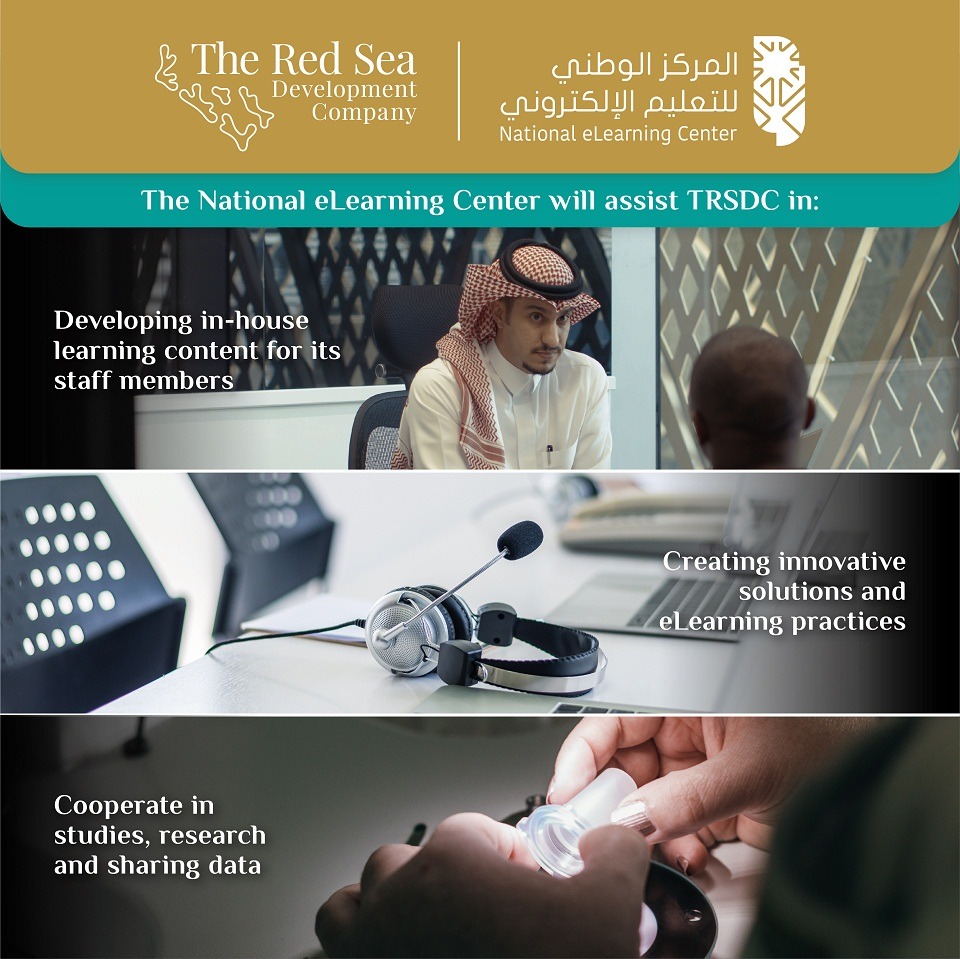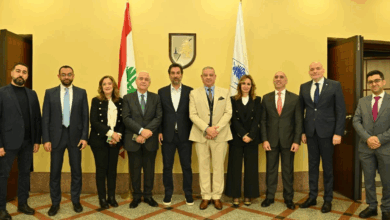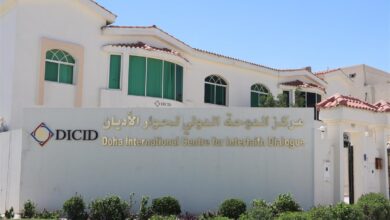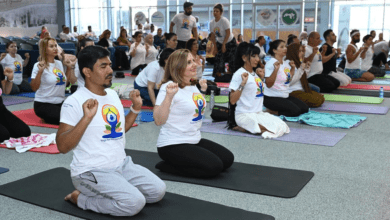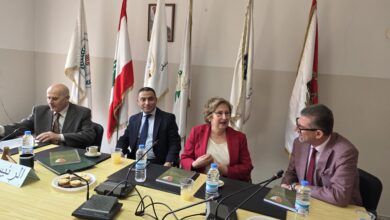The Red Sea Development Company Partners with the National eLearning Center to Enhance Professional Development Opportunities
للاشتراك بالنشرة البريدية اضغط هنا
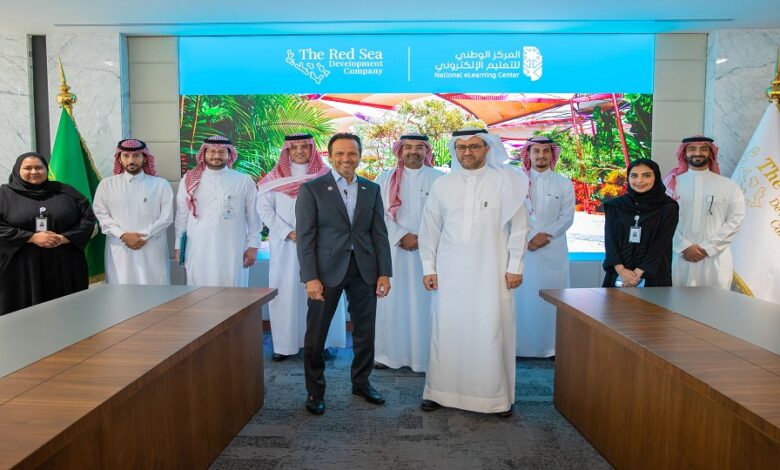
The Red Sea Development Company (TRSDC), the developer behind the world’s most ambitious regenerative tourism project, has partnered with the National eLearning Center to shape a distinct e-learning strategy that both enhances professional development opportunities and improves high-quality outputs to meet the needs of the labor market, to positively impact the national economy.
A Memorandum of Understanding (MoU) cemented the collaboration between both entities to empower local talent with advanced capabilities to succeed in a globally competitive industry, upskilling them with lifelong learning opportunities, in line with the Human Capability Development Program of Vision 2030. The MoU was signed by Dr. Abdullah bin Muhammad Al-Walidi, Director General of The National eLearning Center and John Pagano, Chief Executive Officer of TRSDC.
“As industry changemakers, we recognize that human capital is essential to inclusive economic growth and wellbeing. Building human capital is critical for the country and our success,” said John Pagano, Chief Executive Officer of TRSDC.
“TRSDC is committed to becoming an employer of choice by recruiting and retaining exceptional talent, cultivating a people-oriented culture and elevating the skills and capabilities of our employees. The signing of our MoU with the National eLearning Center today marks another significant milestone in fostering a working environment where continuous talent development is encouraged to support employees at each level of their career path.”
The partnership will foster innovation in digital transformation through the National eLearning Center Platform”FutureX”, training and qualifications, consultation services, and corporate social responsibility (CSR).
The Center will assist TRSDC in developing in-house learning content for its staff members through SuccessFactors LMS, creating innovative solutions and eLearning practices in addition to bringing in cutting-edge technologies in eLearning by international companies that fit the specific needs of TRSDC. The National eLearning Center will also offer TRSDC expert consultations and insight into the evolving eLearning industry and assist in establishing a CSR program focused on this field.
Dr. Abdullah bin Muhammad Al-Walidi said:”At the National eLearning Center, we contribute to building human capabilities that meet the market needs through high-quality online learning. Access to knowledge and information is a key aspect of building a knowledge-based economy in the Kingdom of Saudi Arabia. The benefits of eLearning include the availability of useful assets and tools, and TRSDC employees will now be able to take advantage of these to complement their qualifications. Through our joint expertise, we will be able to form a well-rounded structure that will utilize the latest trends and practices in eLearning and boost corporate productivity.”
Through its 2030 Vision, the Kingdom of Saudi Arabia aims to create one million jobs in the tourism and hospitality sector, and TRSDC intends to contribute 10 percent of this goal. Currently, nearly 1500 individuals are employed by TRSDC and AMAALA, 50 percent being Saudi Nationals. Upwards of 120,000 direct and indirect jobs are expected to be created by 2030.
Just last month, TRSDC partnered with the Human Resources Development Fund (HRDF) to provide 500 vocational training placements for careers that support the growth of the ambitious tourism destinations on the Red Sea coast. The programs are focused on the following disciplines: Hospitality, Airport Services, Mechanical Engineering, Electrical Engineering and Renewable Energy Services.
The Red Sea Project has already passed significant milestones and work is on track to welcome the first guests by the end of 2022. Phase one, which includes 16 hotels in total, will complete in 2023.
Upon completion in 2030, The Red Sea Project will comprise 50 resorts, offering up to 8,000 hotel rooms and more than 1,000 residential properties across 22 islands and six inland sites. The destination will also include an international airport, luxury marinas, golf courses, entertainment, and leisure facilities.



